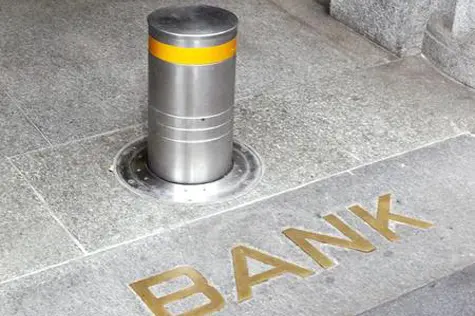PHOTO
Underpinned by improving stable financial footing, banks in the GCC should breathe a little easier in the year ahead, S&P Global Ratings said.
After two years of significant pressure, 2018 would mark the stabilization of the financial profiles and performance of GCC banks, barring unforeseen events, S&P said in its report titled "GCC banks should see a more stable financial footing in 2018
The ratings agency noted that GCC banks would have recognised most of the impact of the softer economic cycle on their asset quality by mid-2018. "That's except for Qatar, where trends in asset quality will depend on how the boycott of the country evolves. Relatively sluggish economic conditions will also keep lending growth muted, as we do not expect oil prices to rebound significantly," it said.
The cost of risk of the bank in the region will increase in 2018 because of the adoption of IFRS 9 (international financial reporting standards) and the higher amount of restructured and past due but not impaired loans sitting on their balance sheets, the ratings agency noted.
However, the general provisions that GCC banks have accumulated over the years will help a smooth transition to the new accounting standard, it said.
"GCC banks' liquidity improved in 2017, and we do not foresee a major change in 2018. Continued debt or sukuk issuance by the GCC governments in 2018 will absorb some of the liquidity without a major change in GCC banks' risk appetite. Finally, we think that GCC banks' profitability will stabilise at a lower level than historically, underpinned by an increased cost of risk and the introduction of value added tax, some of which banks will pass on to their clients" S&P said. Banks in the GCC continue to display strong capitalisation by global standards, albeit with signs of quantitative and qualitative deterioration. "Over the past year, we have affirmed most of our ratings on banks in the GCC. We have taken a few negative rating actions, most of them on banks in Bahrain, Oman, and Qatar. Overall, 28 per cent of our rated banks in the GCC currently have a negative outlook," said S&P.
Bank with negative outlook are concentrated in Qatar, due to the potential effect of the boycott on Qatari banks' funding profiles, asset quality, and profitability, but there are a few banks in other GCC countries where idiosyncratic reasons drive our negative outlook, said the report. The report noted that the slowdown in economic activity over the past two years only resulted in a slight increase in nonperforming loans (NPLs).
On September 30, 2017, NPLs to total loans for the rated GCC banks reached 3.1 per cent, compared with 2.9 per cent at year-end 2016. "We expect NPL ratios to continue to deteriorate in the next six months and then progressively stabilize, mirroring the stabilisation of the GCC countries' real economy. Overall, we do not expect the NPL ratio to exceed five per cent in the next 12-24 months."
The ratings agency said Qatari banks' asset quality is under increasing pressure.On a positive note, rated GCC banks still enjoy strong NPL coverage by provisions, at 139 per cent on Sept. 30, 2017. "These provisions will prove helpful as banks move to IFRS 9 in January 2018. While we think that the overall impact of IFRS 9 adoption on GCC banks will be manageable, in our view a higher cost of risk will persist for some time," S&P said.
Copyright © 2017 Khaleej Times. All Rights Reserved. Provided by SyndiGate Media Inc. (Syndigate.info).












